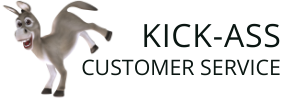Houston, we have a Customer Service Problem
But what does a “customer service problem” really mean?
Remember when you most recently experienced a customer service problem, either in your workplace or as a consumer? I do, and it was just today at a restaurant. The food arrived late and lukewarm. Indeed, my wife received her plate at least five minutes before I did, which left me in a dilemma: Should I just sit there and watch her eat, or should I be productive and use the time to conquer the next level of Candy Crush? I’ll tell you what I did in a moment, but first I want to share some thoughts about potential root causes of poor customer service.
When we experience a customer service problem, we often assume that the poor customer service is a personnel (or “people”) issue, and I admit that’s how I initially framed the situation at the restaurant today. However, I’m reminded of what Lee Cockerell, a former executive at Marriott and, later, Disney World, observes in Creating Magic: 10 Common Sense Leadership Strategies from a Life at Disney: Poor customer service often arises out of a training or process issue, rather than a people issue.
In other words, the root cause of poor customer service is less likely a people issue, and more likely a training or process issue.
I like to think of Lee’s observation this way: Customer service consists of a comprehensive system that relies on three “P” subsystems, each of which is integral to delivering superior customer service: (i) professional development (training); (ii) processes; and (iii) people. Consequently, in order to determine the root cause of a customer service issue in your workplace, ask yourself the following questions.
- P1: Professional Development. Do we have a formal onboarding training program that fully prepares our employees to perform their jobs competently and confidently the very first day they are on the job, or do we have an informal onboarding training program that merely requires new employees to “shadow” other employees for a day or two before swimming (or sinking) on their own? Is our ongoing training program robust and proactive, or is our ongoing training program sporadic and reactive?
- P2: Processes. Do we have formal and published customer service processes that are systematically reviewed for efficiency, measured for effectiveness, and continuously improved? Or are our customer service processes informal, communicated by “word of mouth,” and improved, if at all, only after a customer service crisis?
- P3: People. Do our help-wanted advertisements focus on the requirement of an exceptional customer service mindset, and do we place heavy emphasis on an applicant’s customer service skills over an applicant’s technical abilities? Or do our help-wanted advertisements omit any reference to a customer service mindset, or do we prefer a candidate with strong technical abilities over a candidate with average technical abilities, despite strong customer service skills? Do our employees embrace and consistently exhibit superior customer service, or do our employees, despite coaching and professional development, deliver merely mediocre, if not poor, customer service?
This week, take a moment to reflect on these questions. In fact, why not invite some of your coworkers to lunch to discuss these issues? If you are a business owner or leader, consider dissecting these questions during your next retreat or meeting, remembering that each “P” subsystem is a critical component of superior customer service, just as each individual landing gear is a critical component of the landing gear system of an aircraft.
Oh, and by the way, thanks to the delay receiving my food at the restaurant today, I’m now on level 125 of Candy Crush, which is proving difficult. Anyone have any lives to spare? 🙂
Have a “customerific” week!
Mark
